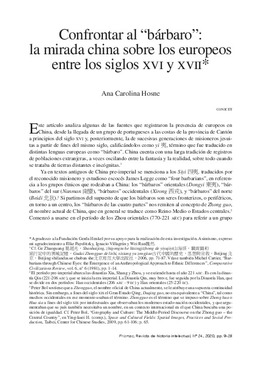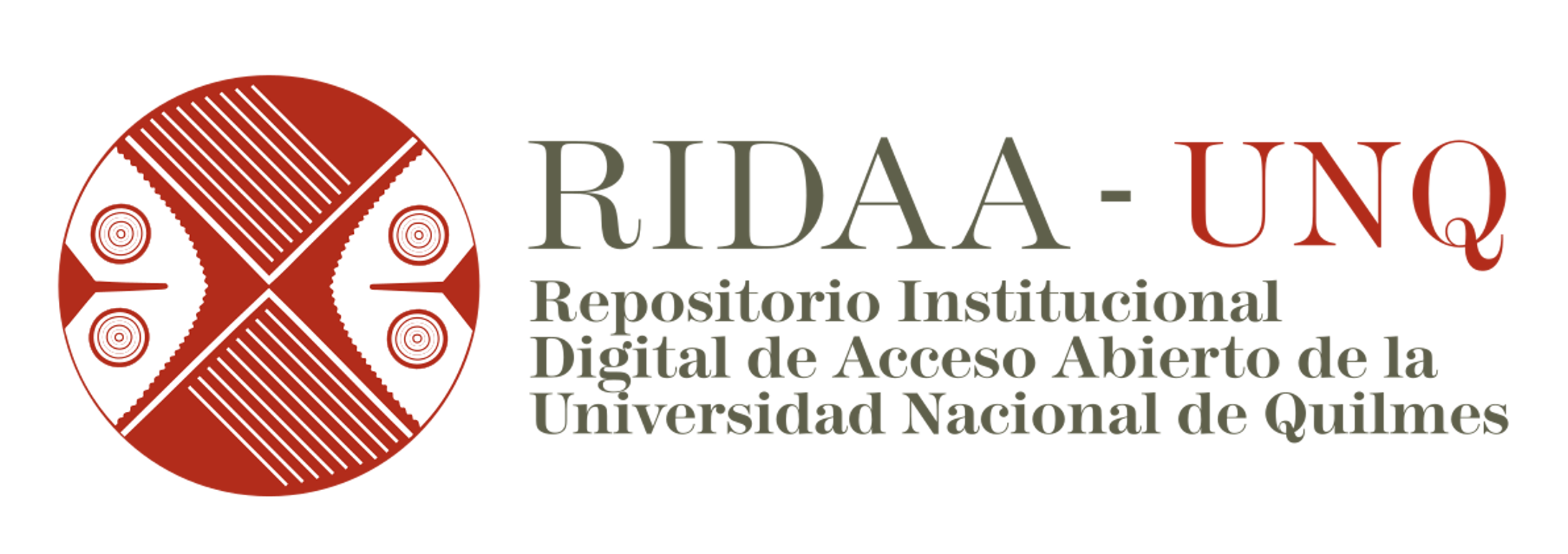Confrontar al “bárbaro” : la mirada sobre los europeos en China entre los siglos XVI y XVII
Facing the “barbarian”. Chinese views of Europeans in the 16th and 17th centuries

Ver/
Fecha
2020Autor
Hosne, Ana CarolinaResumen
Este artículo analiza algunas fuentes que registraron la presencia de europeos en China, desde la llegada de portugueses a las costas de la provincia de Cantón a principios del siglo XVI y, posteriormente, la de sucesivas generaciones de misioneros jesuitas a partir de fines de ese siglo, a los que calificaron como yi 夷, término que fue traducido en distintas lenguas europeas como “bárbaro”. La primera parte de este artículo se centra en algunas cuestiones teóricas en torno al concepto de yi, así como en el tema de la traducción de yi como “bárbaro” por europeos en el siglo XVII. La segunda parte analiza la mirada china sobre los primeros portugueses que llegaron al mar meridional de China en el temprano siglo XVI –llamados Folangji–, calificados como yi en distintas fuentes del período Ming, hasta su posterior radicación en Macao. La tercera parte se centra en la misión jesuítica en China, fundada en 1583, que dio origen a múltiples intercambios de saberes en círculos letrados, en distintas ciudades. No obstante, fuera de estos círculos letrados, los misioneros de la Compañía de Jesús no estuvieron exentos del calificativo de yi. Las conclusiones ofrecen reflexiones sobre los contextos y las situaciones en los cuales los europeos en este período fueron percibidos como yi por los habitantes del Reino Medio. This article examines Chinese records on Europeans –from the arrival of the Portuguese in the South China Sea in the early 16 th century, to that of different generations of Jesuit missionaries as from the end of that century– in which they were named yi 夷, a term usually translated as “barbarian” into European languages. The first part of this article analyzes the theoretical background around the concept of yi, as well as the question of its first translations as “barbarian” by Europeans in the 17th century. The second part focuses on Chinese sources on the first Portuguese who reached the South China Sea in the early 16th century –called Folangji– regarded as yi in different sources during the Ming period, until their later establishment in Macao. The third section examines the Jesuit China mission, founded in 1583, which encouraged exchanges in diverse fields of knowledge in literati and scholarly circles, in different cities. However, in other scenarios outside these groups, the Jesuit missionaries could not avoid being called yi. Concluding remarks reflect on the different situations in which Europeans in the Middle Kingdom were regarded as yi by the Chinese.
